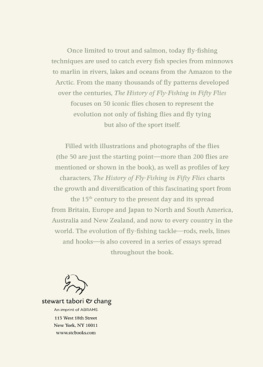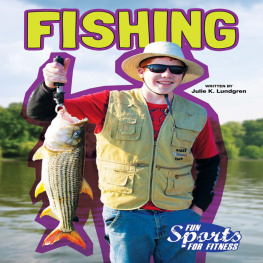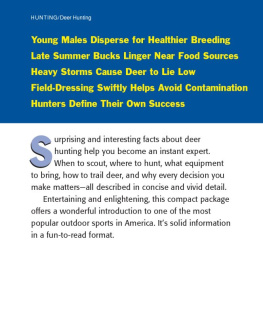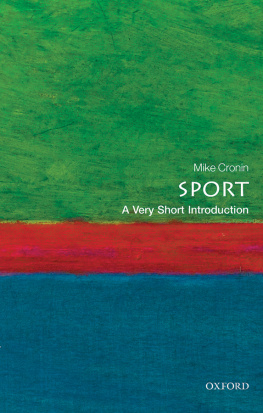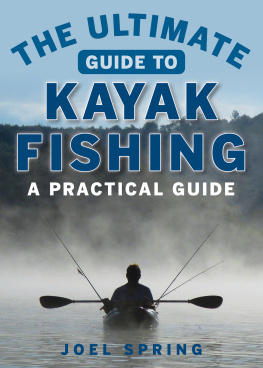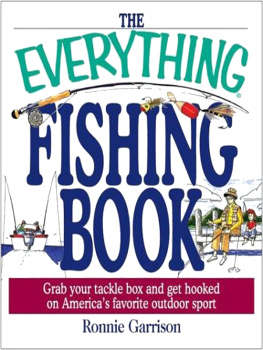Editor - Fly Fishing: 100 Things to Know
Here you can read online Editor - Fly Fishing: 100 Things to Know full text of the book (entire story) in english for free. Download pdf and epub, get meaning, cover and reviews about this ebook. year: 2008, publisher: Stackpole Books, genre: Home and family. Description of the work, (preface) as well as reviews are available. Best literature library LitArk.com created for fans of good reading and offers a wide selection of genres:
Romance novel
Science fiction
Adventure
Detective
Science
History
Home and family
Prose
Art
Politics
Computer
Non-fiction
Religion
Business
Children
Humor
Choose a favorite category and find really read worthwhile books. Enjoy immersion in the world of imagination, feel the emotions of the characters or learn something new for yourself, make an fascinating discovery.
- Book:Fly Fishing: 100 Things to Know
- Author:
- Publisher:Stackpole Books
- Genre:
- Year:2008
- Rating:5 / 5
- Favourites:Add to favourites
- Your mark:
- 100
- 1
- 2
- 3
- 4
- 5
Fly Fishing: 100 Things to Know: summary, description and annotation
We offer to read an annotation, description, summary or preface (depends on what the author of the book "Fly Fishing: 100 Things to Know" wrote himself). If you haven't found the necessary information about the book — write in the comments, we will try to find it.
Fly Fishing: 100 Things to Know — read online for free the complete book (whole text) full work
Below is the text of the book, divided by pages. System saving the place of the last page read, allows you to conveniently read the book "Fly Fishing: 100 Things to Know" online for free, without having to search again every time where you left off. Put a bookmark, and you can go to the page where you finished reading at any time.
Font size:
Interval:
Bookmark:
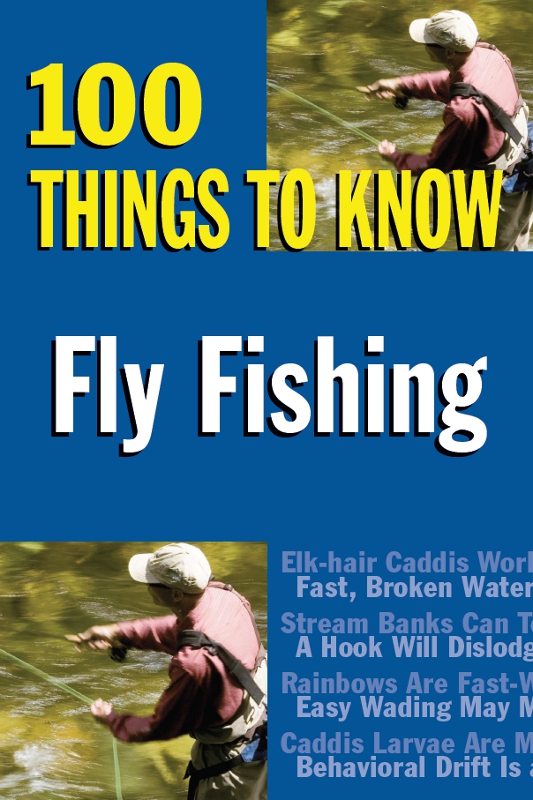
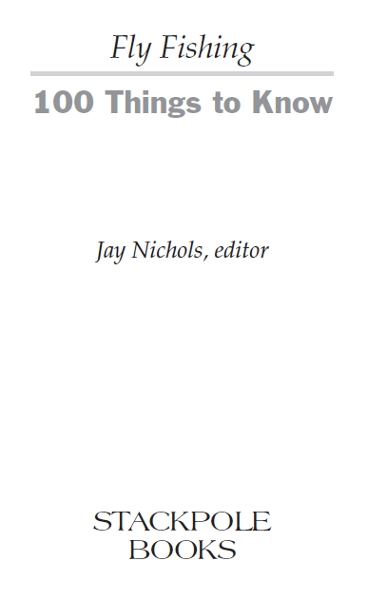
Copyright 2008 by Stackpole Books
Published by
STACKPOLE BOOKS
5067 Ritter Road
Mechanicsburg, PA 17055
www.stackpolebooks.com
All rights reserved, including the right to reproduce this book or portions thereof in any form or by any means, electronic or mechanical, including photocopying, recording, or by any information storage and retrieval system, without permission in writing from the publisher. All inquiries should be addressed to Stackpole Books, 5067 Ritter Road, Mechanicsburg, PA 17055.
Printed in the United States of America
10 9 8 7 6 5 4 3 2 1
First edition
Cover design by Wendy Reynolds
Cover photo David Epperson/Photographers Choice/Getty Images
Library of Congress Cataloging-in-Publication Data
Fly fishing : 100 things to know / Jay Nichols, editor. 1st ed.
p. cm.
ISBN-13: 978-0-8117-3495-0
ISBN-10: 0-8117-3495-1
1. Fly fishing. I. Nichols, Jay.
SH456.F58515 2008
799.124dc22
2007047991
eBook ISBN: 9780811740029
Contents
Approach and Presentation
Fishing Casts Should Not Be Straight
Unlike the arrow-straight casting-pond casts you see on TV or at fly-fishing shows, most fishing fly casts were developed to introduce slack into the leader, which facilitates a drag-free drift of the fly. The crucial slack isnt always prettyit may be in the form of a series of S curves or simply a pile of leader on the waters surfacebut it gives the fly a few more precious moments to float in a natural fashion before the current attacks the leader and line. And its surprising how attractive a well-executed slack-line cast begins to look when you know its the answer to fooling a trout into taking your dry fly.
For a good slack-line cast, make sure your leader is at least 2 feet long, even longer can be better. Youll know if your leader is not long enough if all is straight between your fly line and fly after you cast. If your leader lands in a pile that looks like a birds nest, you should shorten it up a bit. Ideally, you want a leader with lots of S curves in it.
Drab Colors Blend in with the Surroundings
Professional photographers like a touch of bright color to add life to their fishing pictures or to help an angler stand out in a scenic shot. If you are hoping to make a magazine cover, wear a bright red shirt. If you want to catch trout, leave the red shirt at home and wear something drab. Many good anglers wear camouflage clothing when they fish.
Consider the color of the surroundings of the water you plan to fish and dress accordingly. Many spring creeks are bordered with lush vegetation that presents a green background to the fish. Youll blend into this type of environment best if you wear a green or olive vest, shirt, and hat. Many large western tailwaters are in open country with vast prairie grass and sagebrush meadows. Tan, gray, or khaki clothing might blend in best with these surroundings. In the salt, shirts that are light blue or even white (the color of clouds) blend in well.
A Quiet and Low Approach Works Best
The deception in fly fishing is more than in the fly. You must get close enough to present the fly without being detected. This isnt easy on clear, placid water. No matter how your clothing blends in with the surroundings, you must keep out of the trouts window of vision at all times. On streams where they arent accustomed to seeing anglers, a trout alerted to your presence will be gone in the blink of an eye. On heavily fished streams, they usually hold their positiontheyve seen enough blundering anglers to not perceive them as a threat. Either way, a trout that has been alerted will be difficult, if not impossible, to catch.
Use the foliage on the bank to help hide your profile. You can slip along a high bank, or hide beneath a bush or tree and blend into the surroundings. Walking on a high bank with nothing but blue sky behind you is a sure way to convince the trout that it needs to find another place to eat. You can get a little closer to a feeding trout by crouching to keep your profile low. Kneel on one knee so you can get up more quickly. Consider the tip of your fly rod when you are approaching. Keep it behind you so you dont give the trout an early warning of your approach.
Wading Disturbs Fish
When planning your approach, first try to get close enough to cast without wading. Wading creates vibrations, no matter how careful you are, and should be avoided whenever possible. If you do need to wade, avoid grinding the rocks on the bottom. A probing wading staff clinking against rocks or waves on the surface from careless wading signals to fish that trouble lurks nearby. The best way to wade to avoid grinding and wave action is to not shuffle your feet across the bottom. Shuffling also disturbs the bottom and damages the aquatic life. Lift one foot at a time; plant your heel and rock forward to your toe. Murky water can put a fish off its feeding. When you locate a trout and need to position yourself across current from it, try to wade across far enough below it to avoid being detected. If you must wade across from above, try to move far enough upstream so that the clouded water will disappear before it reaches the trout.
Walking on the bank also creates vibrations, which will be easily sensed by a wary trout. Walk softly, carefully, and precisely. Minimizing vibrations is not the only reason to walk slowly and carefully. Nothing terrorizes a trout more than a 200-pound angler doing a half gainer after stepping into a muskrat hole or tripping over a strand of barbed wire.
Wind and Sun Direction Affect Success
Always consider the wind and sun before you get into casting position. There is no reason to handicap yourself by trying to see your fly with the glaring sun in your face or the wind blowing the fly back into your body. If possible, stalk a trout with the sun at your back; you will usually have the advantage of the trout not being able to see you as well. If your shadow suddenly appears to a trout, you can kiss it good bye. It is also easier to see your fly on the water if the sun is at your back. Check the direction of the wind before you try to approach a feeding fish. A stout breeze can dramatically affect your accuracy and distance. If possible, try to get the wind behind you. The worst situation is when the wind blows from your casting arm, across your body.
The First Cast Should Be the Best Cast
The first cast is the most important. Your odds decrease with each additional cast. Most anglers can cast much more accurately at close range, plus the more line on the water, the harder it is to get a drag-free float because there is more surface pulling at the line. The closer you can get to a feeding trout, the better your chances of taking it.
Measure your cast by false casting low and well to the side of the fish before making your presentation cast. Some anglers measure their cast by letting the line flow downstream of themgetting a feel for the amount of line they will need and then verifying that amount with one false cast well to the side of the fish before their presentation cast. To help ensure that you get it right the first time, plan your approach first, and only cast as far as you are comfortable, making sure that you dont have more line out than you need to make the castany extra will surely tangle.
False Casts Dont Catch Fish
Next pageFont size:
Interval:
Bookmark:
Similar books «Fly Fishing: 100 Things to Know»
Look at similar books to Fly Fishing: 100 Things to Know. We have selected literature similar in name and meaning in the hope of providing readers with more options to find new, interesting, not yet read works.
Discussion, reviews of the book Fly Fishing: 100 Things to Know and just readers' own opinions. Leave your comments, write what you think about the work, its meaning or the main characters. Specify what exactly you liked and what you didn't like, and why you think so.





